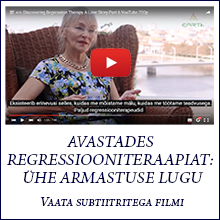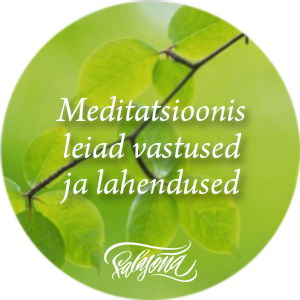Rita Eevard
The role of the victim is experienced by anyone who has been involved in the turbulence of war or major accidents. Such a situation is dramatic in nature and extremely unsafe, and the person who gets into it is in a really difficult and sometimes even inescapable position. Often, however, we are in the victim’s role even if, apparently, the situation is not so difficult that nothing can be done. The problem, however, seems completely insoluble to the person concerned.
How does the role of the victim express itself in everyday life? It can manifest itself in a relationship with an increasingly demanding ageing parent, in having to tolerate a spouse suffering from work or alcohol addiction, in a constantly stressful working environment, and of course in violent and life-threatening relationships. Usually, a person does not realise that he or she has assumed the role of a victim and instead accuses other people and the environment for their unhappiness and hardship, without acknowledging their own part in it and seeking ways to change things.
Where are the roots of the victim’s role?
When examining the background and growth environment of a person in a victim role, you can often find, to some degree, a lack of parental and emotional support. If the home environment in childhood and adolescence has been overshadowed by parents’ excessive focus on work, parents’ or caregivers’ excessive self-centredness, alcohol or other substance addictions, a lack of sexual boundaries, family mental health problems, acute quarrels, and so on, a child growing up there cannot develop secure relationships of affection with other people or with themselves. This, in turn, contributes significantly to the victim’s role in adulthood.
The nervous system plays an important role in the role of the victim.
American psychology professor, psychiatrist and neuroscientist Stephen Porges has created a theory that classifies a person’s autonomous (involuntary) nervous system into three parts, in a hierarchical order. The most advanced part is related to social interaction, the part below that is related to fight or flight, and the most basic part is related to freezing.
The way we react in a crisis situation is an expression of which part of the autonomous nervous system is currently serving us. Can we detect our own reactions peacefully and make reasonable decisions accordingly and be in contact with other people? Or are we willing to start protesting the situation that has arisen and take a fighting stance? Or even run away, slam doors, break off relationships? Or maybe we just pretend like nothing has happened?
Which part of the autonomic nervous system takes the leading role is often set in early childhood.
A lack of parental support causes a sense of insecurity in a growing child, resulting in the quick, instinctive and subconscious activation and response of the autonomic nervous system. One needs peace of mind in order to experience one’s emotions and understand their messages, as well as to know and accept one’s real self. A growing and developing brain cannot yet create this condition itself, which is why it requires the secure support of parents and the surrounding environment. Shame and the danger of feeling shame accompany people all their lives. We are social beings; we worry whether we will find an approved, valued and recognised place in society. If we can’t find a place like this, we’ll have nowhere else to go. From the first moments of our lives, we strive to achieve understanding and love, and to love ourselves.
If a child experiences ridicule, humiliating criticism, hostility, abuse and recklessness in the environment that is supposed to provide security, they feel invaluable, inadequate, incompetent, unworthy of love, and cast out. They conclude not only that their given behaviour is unacceptable but that they themselves are completely bad and unworthy. Even if the parents or caregivers do not intend to provoke shame, a child can still feel it, due to the failure of contact and lack of empathy from them.
In an unsafe environment, the most advanced part of the autonomic nervous system in evolutionary terms – the ability to engage in social relationships – turns off, and the sense of security weakens. Then the basic parts of the autonomic nervous system take control. To cope with danger and insecurity, the next fight-or-flight strategy (excitability) is activated. Even if this life-sustaining active protection system does not produce a result, the oldest strategy – playing dead or becoming passive, freezing, surrendering (sub-excitability) – takes its place. Since the last two strategies are not subordinate to the will, we find ourselves in a sacrificial role, related to our own emotions and the people who are in touch with us. We are either in a constant defensive position regarding our emotions as well as other people, ready to escape at any moment, or simply avoiding contact as if emotions or other people did not exist.
Our nervous system evolves and is shaped under the influence of life experiences and environmental factors. Experiences of insecurity and emotional trauma repeatedly lead the autonomic nervous system to a state of over- or under-excitement. In a secure environment, we develop the ability to use emotions as our life regulators. However, in an unsafe environment, this ability cannot evolve, and the experience of security cannot prevail.
The ability to be calm and relaxed, in touch with your emotions, other people or the environment rapidly diminishes in conditions of unsafe growth. Since we are not able to adequately assess our emotions, we also misread the situations that arise. Soon the nervous system begins to protect life upon every little impulse, either by actively overreacting or by passively underreacting. In such a state, our thinking blurs and reasonable thought processes are interrupted, as uncontrollable emotions and feelings take hold.
For example, imagine a situation where you’re standing in line at the grocery store, exhausted after a hard day. Suddenly someone next to you jumps ahead of you and starts putting his things on the checkout counter, as if you didn’t exist. The situation is unexpected and unpleasant. How do you react? Are you going to attack the line-jumper and ask him to wait his turn; take your trolley and go and stand in a different line, pretending that nothing has happened; or are you going to look inside yourself to acknowledge the emotion the situation has created and help yourself to return to a peaceful state of mind, and then decide what the best thing to do is in this situation? You can insist that he wait his turn, or you can go and stand in a different line, or keep standing in this line, but now that is your conscious choice. You and your emotions have been seen and experienced, and you are no longer in the role of the victim. As they say, the situation itself is neutral; we can choose how we approach it. The emotional reaction is always linked to our past experience and may not be relevant to the situation. Maybe this person was also fatigued after work and did not notice you, or had another, completely unexpected reason for such behaviour.
The consequences of prolonged insecurity
A long period of insecurity may lead to different problems: a constant need to please others; thoughts that you are not the master of your own life or that you are not able to change anything in life; feelings of being guided by faith or other people; a constant feeling of inadequacy (as a spouse, as a subordinate, as a member of society); getting into overly connected and exhausting relationships with a partner, parents or adult children; constant worry about “what others think of me”; neglecting one’s needs; fear of failing; an extreme sense of responsibility, guilt or ability; over-protection of others both at home and work; or a constant sense of shame. A variety of physical disorders such as headaches, stomach pains, insomnia or fatigue may also occur frequently.
If the internal nervous system is not able to balance the level of excitement, a person may subconsciously adopt an approach in which he or she tries to balance their inner feelings in relationships with other people. For example, the roots of the need to please others may be associated with under-excitement, often accompanied by shame and sorrow. Being sympathetic to others, being too adaptable, and sacrificing too much for their needs does not usually lead to a breakup of relationships and an experience of shame. It is as if a person provides a safe environment for themselves without realising that the situation is very insecure for their own inner self.
A sense of shame is the central emotion of low self-esteem. It reflects our separation, isolation, inferiority, lack of understanding or exclusion. Shame is triggered when a gulf arises between the self and another human being – a disruption of empathic bonds, understanding, acceptance and harmony – resulting in underestimating the self and believing that he or she is inadequate or inferior in some way (Mollon, 2002).
You might also be “protected” from shame by keeping busy, seeking perfection or excellence, indulging in self-promotion or living beyond your means. This allows you to restrain painful feelings of shame.
Moreover, living in a sustainable mode, downscaling yourself and your own abilities, can be the result of reactions from the experience of insecurity in the autonomous nervous system.
A weakened internal capacity to assess security can lead to a situation where overly burdening and difficult human relationships are constantly being encountered. In these relationships, it may seem safe, for although the body is pushing itself to its limits – although it is in full stress and in an alert state – the body’s condition and feelings are familiar and therefore “safe” based on earlier relationships. So a person from a violent home subconsciously chooses a partner who evokes a familiar feeling, without realising that this familiarity is anything but secure.
Sometimes the ability to tolerate pleasant emotions can be downgraded; a person experiences them as strangers and therefore as dangerous and threatening. In this case, a friendly and loving companion does not offer a familiar ”sense of security” and is pushed aside as a dull and unpleasant one.
Recovery
Concerning the nervous system, it is essential to obtain restorative and secure experiences. These could be found in reliable human relationships or meetings with a therapist. Various mental images of a safe place, which can be used to calm the nervous system, are also important.
The possibility of being in touch with our emotions and other people grows with our ability to remain calm when facing our emotions and other people. At first, this kind of contact may seem very threatening. The habitual pattern immediately triggers all our alarm signals, and clear, calm thinking tends to leave us.
The contact can be restored by the peaceful examination, recognition and awareness of body signals and setting aside the search for emotional relationships. It’s important just to notice your breathing and heart rate, or whether there are any feelings, movements, or sensations in your body. Body-oriented techniques are very important in the healing process and in restoring contact. Focusing on experience here and now, on becoming aware of it, admitting it and formulating it will help strengthen the nervous system.
It makes sense to start relating emotions to body states gradually and only after we have learned to stay calm when facing our emotions and other people. This way, we keep emotional numbness or flooding at bay, and the cognitive, observant witness is close to us.
In the therapy process, a therapist is the first calm observer and witness. When a client finds that their inner world is acceptable to another person and doesn’t cause abandonment and rejection, it gives them the courage to open themselves up even more and take an interest in their own inner world. Gradually it becomes clear that there is an enormous amount of beauty and value that, due to various erroneous decisions and reactions from other people, has been discredited and hidden away.
A holistic journey can be used to create a safe place and encourage your inner self at a deeper, unconscious level. We can go back to situations where the sense of security was lost and get a new experience, this time in the presence of a calm and supportive observer. With a therapist to help you, creating bridges between different bodily feelings, emotions and thoughts is easier, and the whole process is faster.
That way, within ourselves there can develop a kind and secure adult. Studies have shown that experiences where we can remain calm, when our emotions appear and when we meet with other people, offer a sense of security. This, in turn, makes it possible for the nervous system to develop and mature. The primary and greatest precondition for change is a stress-free state. Therefore, support for improvement must also be very warm and compassionate and stress-free, even if the process is slow and bumpy. That applies to both the process within us and that in support of others. The most important thing is to increase understanding, warmth and compassion for yourself.
However, such a subconscious coping strategy – the tendency of the nervous system to react excessively to situations – always supports life. We don’t overreact or get into burdensome human relationships because of our stupidity, foolishness or insanity. Our nervous system is resourceful. It decides for us when, for example, it is good to save energy, to dampen the light, to sink into depression: “I was so smart I couldn’t be bothered to waste my strength and live to the fullest in this environment where life was not respected.“ We can be grateful to our nervous system’s coping strategy, because it has worked hard for us. Having expressed our thanks, there is time for re-evaluation and the ability to ask if this is the life we wish to live. From here on, there’s an opportunity for moments, days, months, and years where we notice that something has changed. We can see that we have moved on; thanks to awareness, we are able to make active choices, so that our inner self can be expressed more and more freely and all the beauty of being that has been hidden for years will be visible and enjoyable to ourselves and everyone around us.
***
Sources:
- Phil Mollon, Shame and Jealousy, 2009.
- Kirsi Törmi, Miksi minulle aina käy näin? (Why Does It Always Happen to Me?)
- https://uudistuva.com/2017/10/05/miksi-minulle-aina-kay-nain/













0 Comments